‘Get back in the kitchen.’
By 1913, the women’s suffrage movement had stalled.
A constitutional amendment to grant women voting rights, proposed thirty-five years before, had come up for a vote in Congress only once, and it had failed.
Six western states had adopted laws granting women voting rights, but the rest of the nation had not.
In the absence of a constitutional amendment, women’s voting rights were subject to the vagaries of politics.
Theodore Roosevelt had advocated women’s suffrage in his 1912 presidential bid, but he had lost to Woodrow Wilson, who opposed it.
‘A woman’s place was in the home,’ Wilson said.
But Wilson’s inauguration in March 1913, which would draw crowds and national press to Washington, presented an opportunity for the suffragettes to make their case.
So, they planned a parade down Pennsylvania Avenue for the preceding day.
The D.C. police superintendent issue a parade permit reluctantly and assigned only a small police patrol for the event, prompting the Secretary of War to put a Fort Myer cavalry unit on standby.
But the parade began well.
A prominent activist led the parade on horseback, riding next to a replica of the Liberty Bell.
An activist dressed in a white cape and tiara, representing the “New Woman of the Twentieth Century,” followed astride a white horse, carrying a banner which read “Forward into Light.”
Women from around the world marched in national delegations.
They wore a rainbow of colors signifying women ‘coming into the light and leaving the darkness behind.’
American women marched in state delegations.
Professional units followed, dressed in their work uniforms.
College graduates marched in their academic regalia and a contingent of men who supported women’s suffrage marched, too.
Marching bands played patriotic songs.
Floats depicted the beauty and competence of women at home and in the workplace.
It was magnificent.
But as the parade made its way down Pennsylvania Avenue, a group of rowdy men — some drunk — stepped into the street and blocked the parade route.
They shouted sexual taunts and insults, spit on the women, and shoved some marchers off the street.
There was ‘barnyard conversation,’ some women later said.
Women locked arms and defended themselves with hat pins and flag poles.
People were trampled.
Ambulances were called and a hundred women were taken to the hospital.
As for the police, they ‘blended into the crowd of men,’ according to witnesses.
‘This wouldn’t have happened if you had stayed at home,’ some policemen had said.
After an hour of mayhem, the Fort Myer cavalry arrived.
They cleared men from the street, allowing the parade to continue.
Press reports of the confrontation sparked national outrage, overshadowing Wilson’s inauguration the next day.
The tumult brought new supporters to the women’s rights movement.
But it would take six more years before the nineteenth amendment, granting women the right to vote, became law.
******************************
I’ll see you tomorrow.
— Brenda





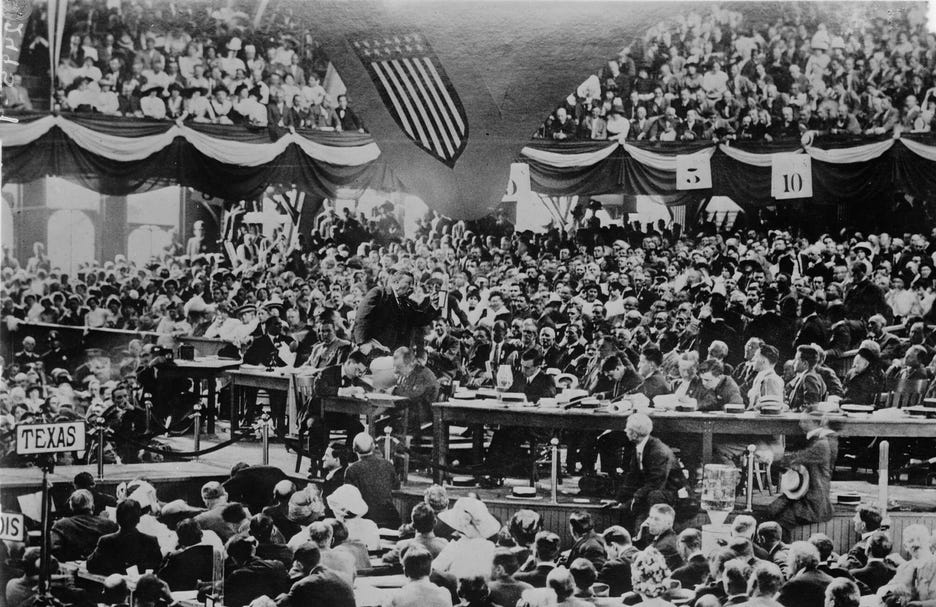
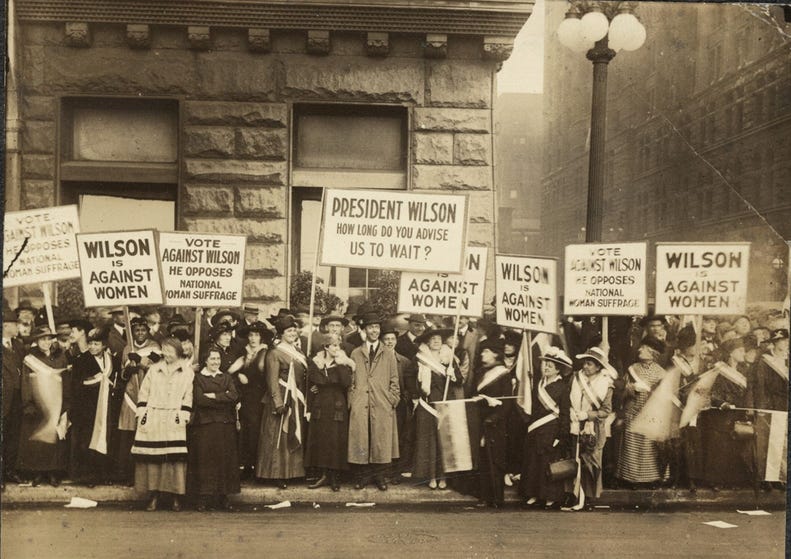
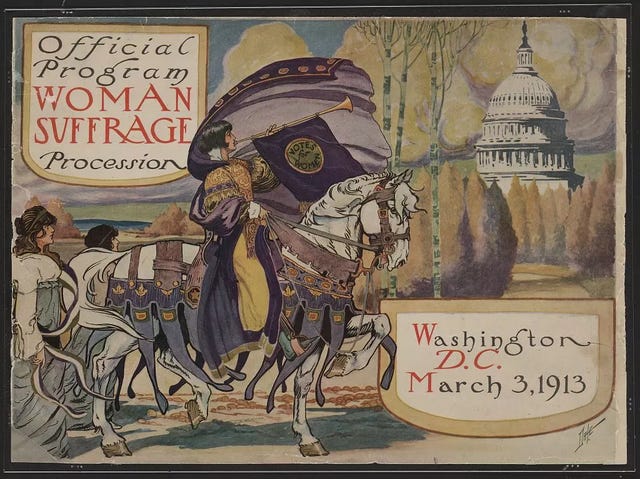
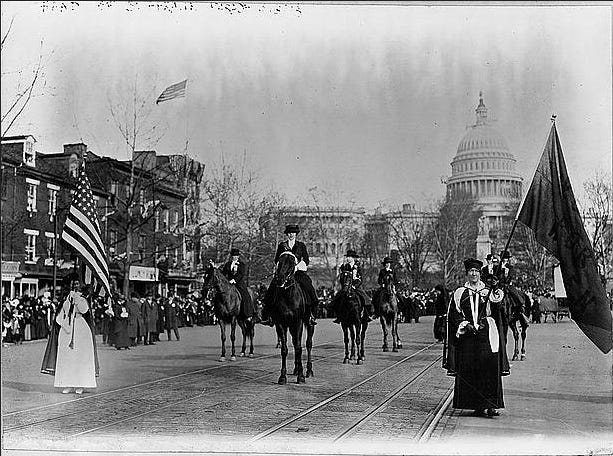
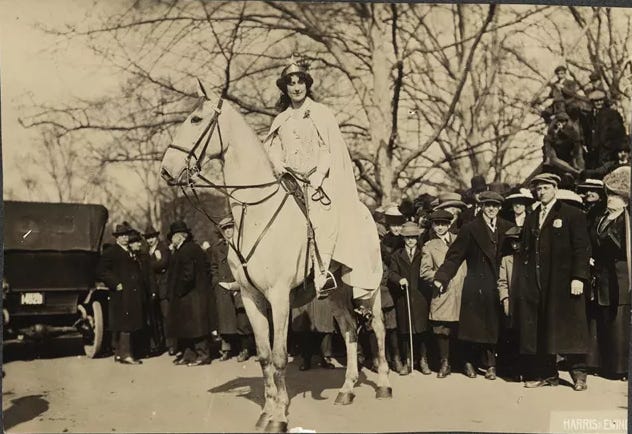
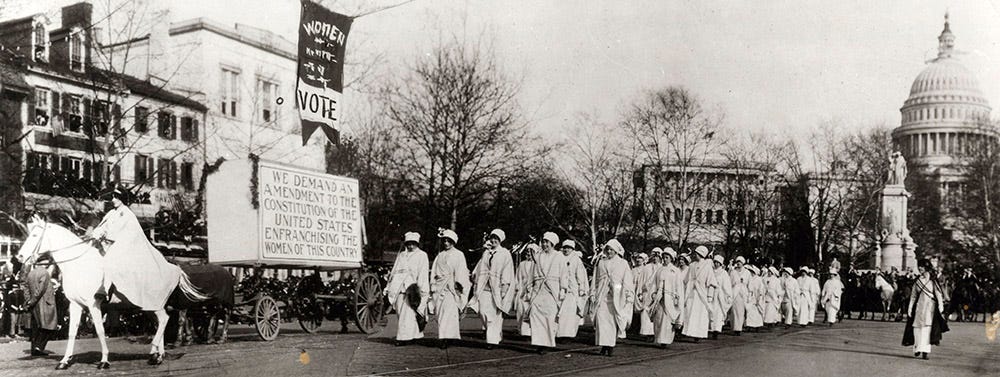
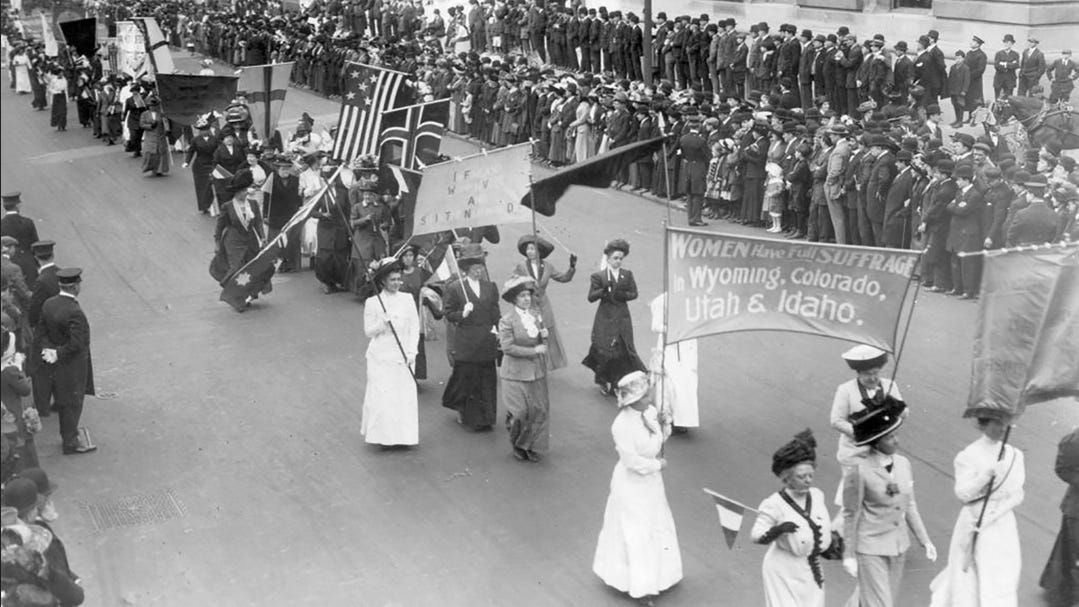
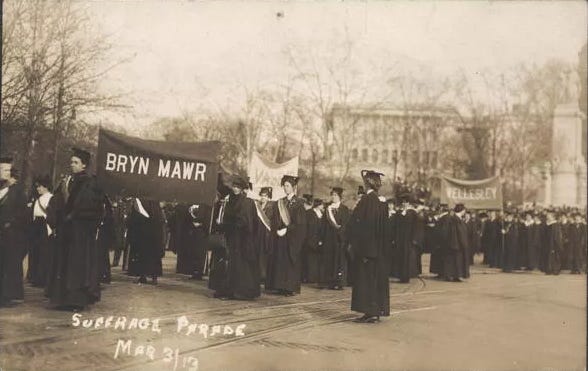
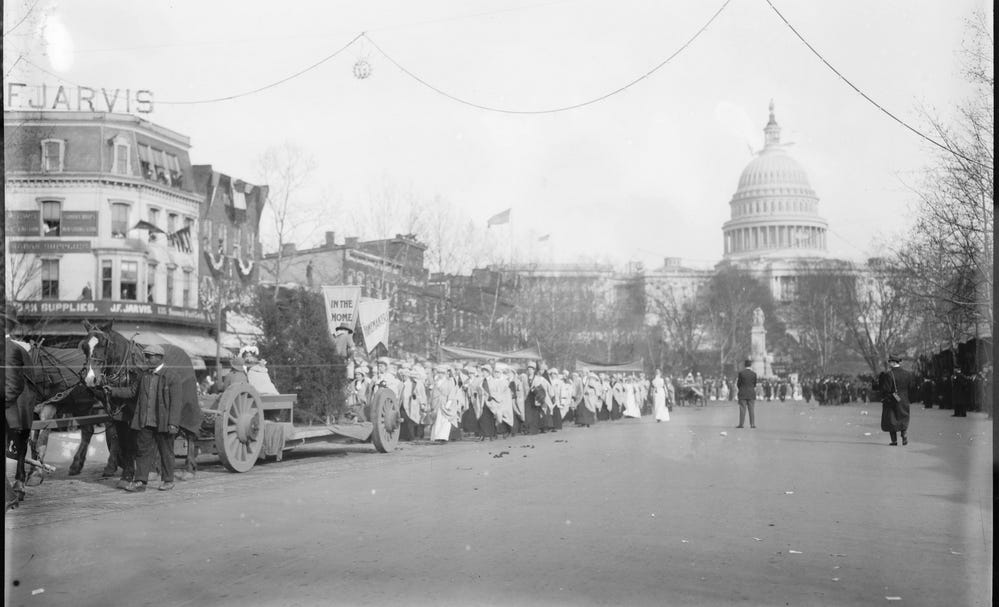
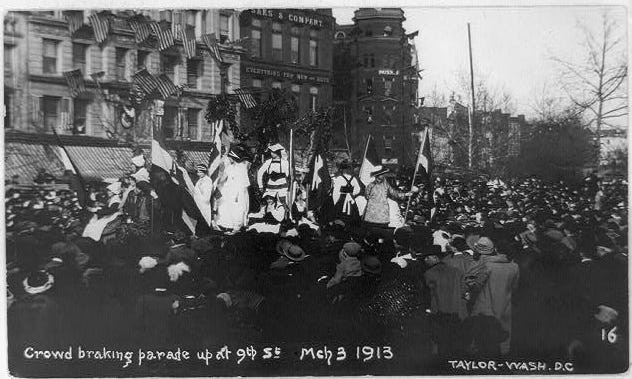
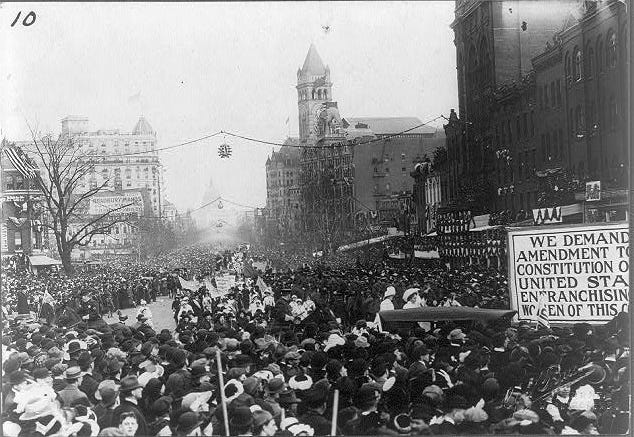
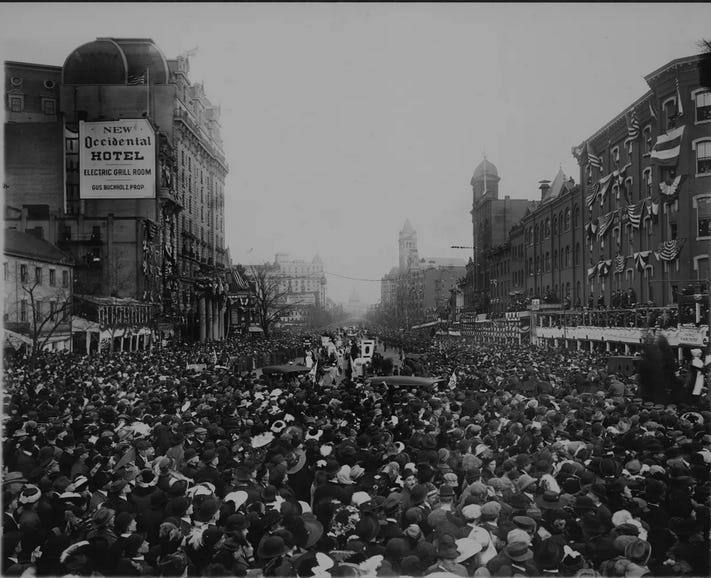
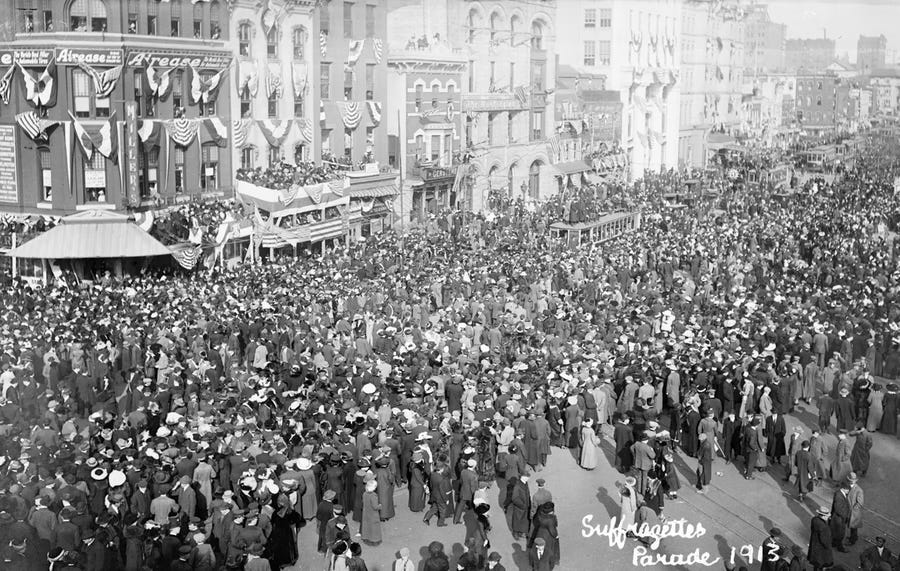
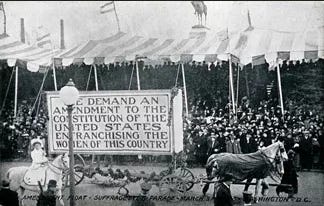


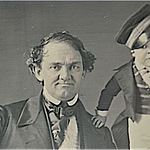
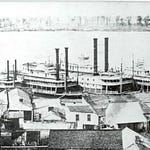
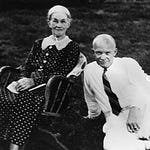

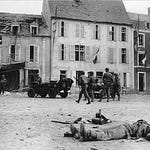
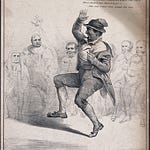
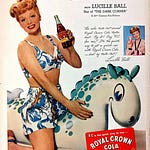
Photo of the Day